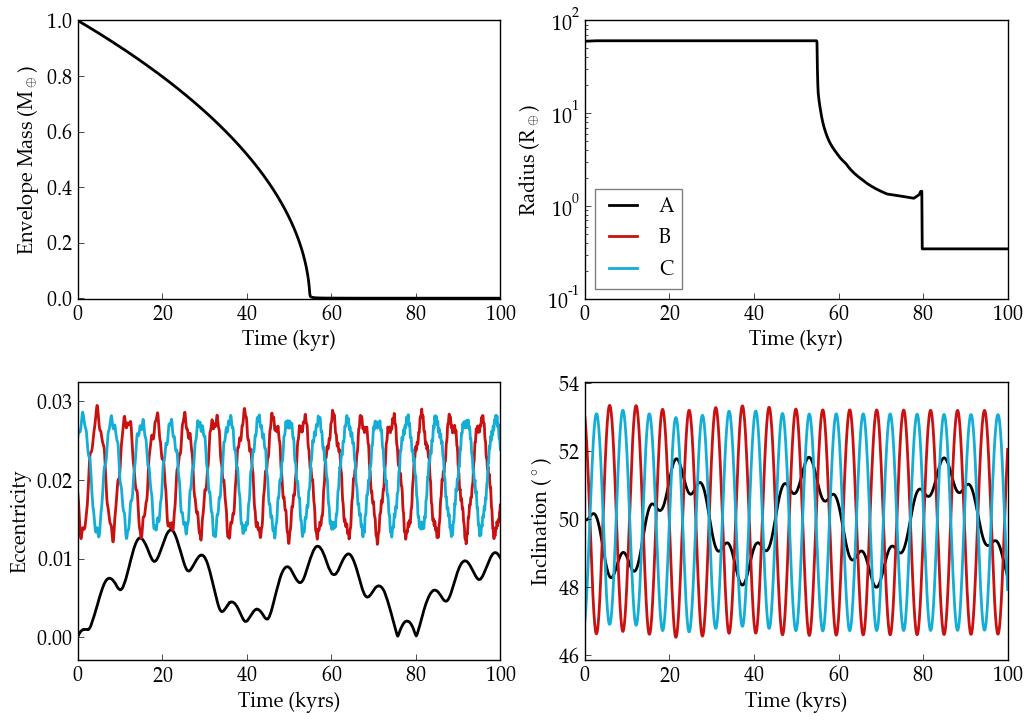Coupling Atmospheric Escape and N-Body Evolution: Application to PSR1257+12
Overview
Coupled atmospheric and orbital evolution of the PSR1257+12 pulsar planetary system. This example connects the energy-limited escape/Lopez et al. (2012) envelope model to the N-Body module SpiNBody.
Date |
03/10/2020 |
Author |
Rory Barnes |
Modules |
AtmEsc SpiNBody |
Approx. runtime |
30 min |
The orbital parameters are taken from Konacki & Wolszczan (2003). The XUV luminosity of the pulsar is assumed to be 0.001 L_sun, which is about 3 times larger than the X-ray luminosity found by Pavlov etal. (2007). The initial envelope mass of planet A is 1 Earth mass, with a core mass of 0.02 Earth masses, which is the currently observed value Konacki & Wolszczan (2003). While such an initial composition seems unlikely, the large mass loss allows for the coupling to be apparent in a simulation that requires ~1 hour to complete. Mass loss for the B and C companions can occur of billion year timescales, see the AtmEsc directory. The mass of the pulsar is 1.4 solar masses Gozdziewski et al. (2005).
To run this example
python makeplot.py <pdf | png>
Expected output

Top left: Envelope mass of planet A. Top right: Radius of planet A. Bottom left: Eccentricity evolution of all planets. Bottom right: Inclination evolution of all planets. Note the second and third eccentricity cycles are lower than the first, which is due to A’s mass loss. Compare to Fig. 1 in Gozdziewski et al. (2005).